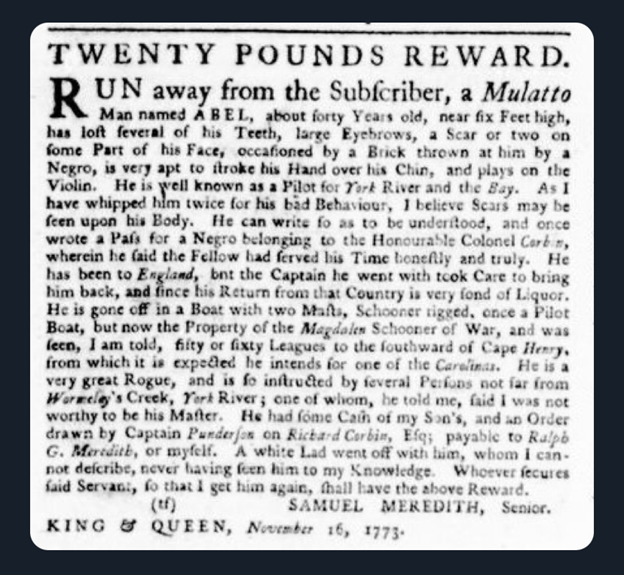
Abel
Abel was born about 1730. Identified as a “Mulatto,” he was almost certainly the son of a white man and an African-born or African-descended woman. If he was born in Virginia, his mother could have been one of the many girls and women enslaved and transported to the Americas in the early eighteenth century. Perhaps […]
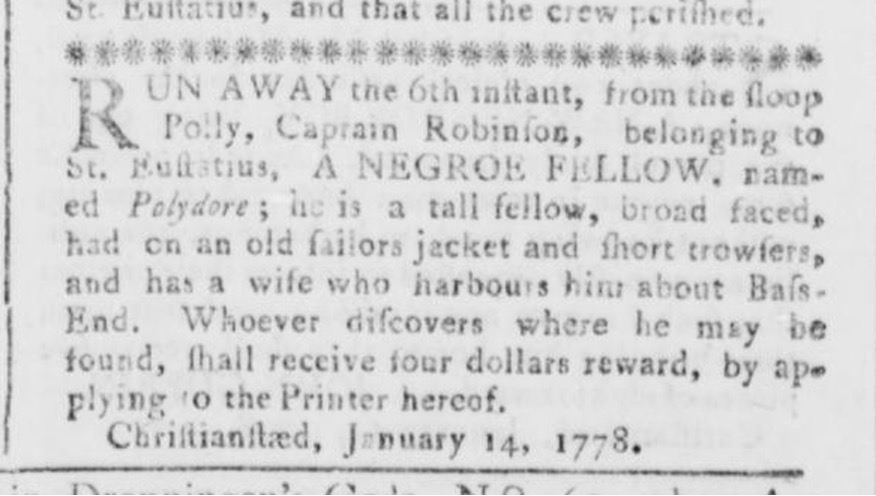
Polydore
On 16 November 1776, Isaiah Robinson, captain of the Andrew Doria, sailed into Oranjestad, the capital of St. Eustatius, a Dutch Caribbean colony. Seeking to purchase weapons and gunpowder for the United States and flying the flag of the Continental Congress, Robinson fired a thirteen-gun salute, one for each of the newly independent states. St. […]
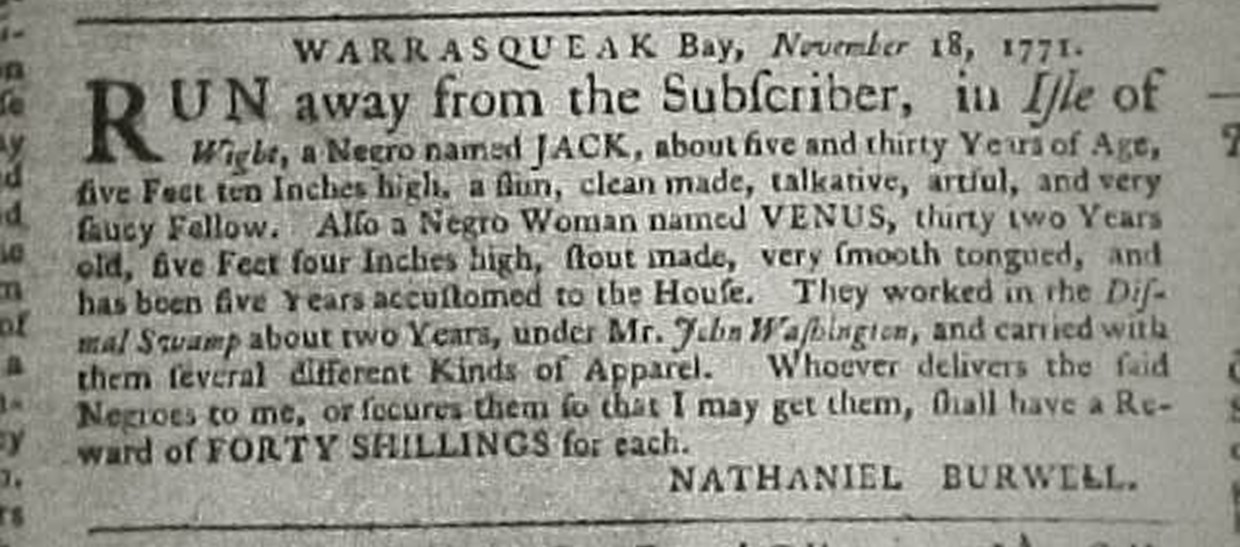
Jack and Venus
On November 18, 1771, two of Nathaniel Burwell’s enslaved people absconded from his place in Warrasqueak Bay. Unlike most planters of his day, he elected to wait before turning to print. Rather than solicit the attention of his neighbors by way of a newspaper advertisement, the Virginia grandee might have thought a more sensible course […]
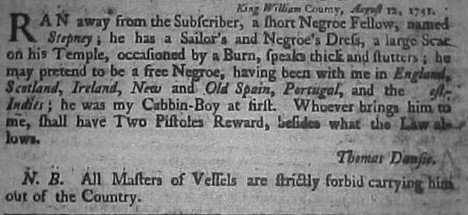
Stepney
Stepney had seen a lot of the world. He may well have been born more than five thousand miles east of Virginia, for more than one-third of mid-eighteenth Virginia’s enslaved population had been born in Africa.[1] If that were the case, his oceanic travels had begun with the horrific Middle Passage, but thereafter his journeys […]
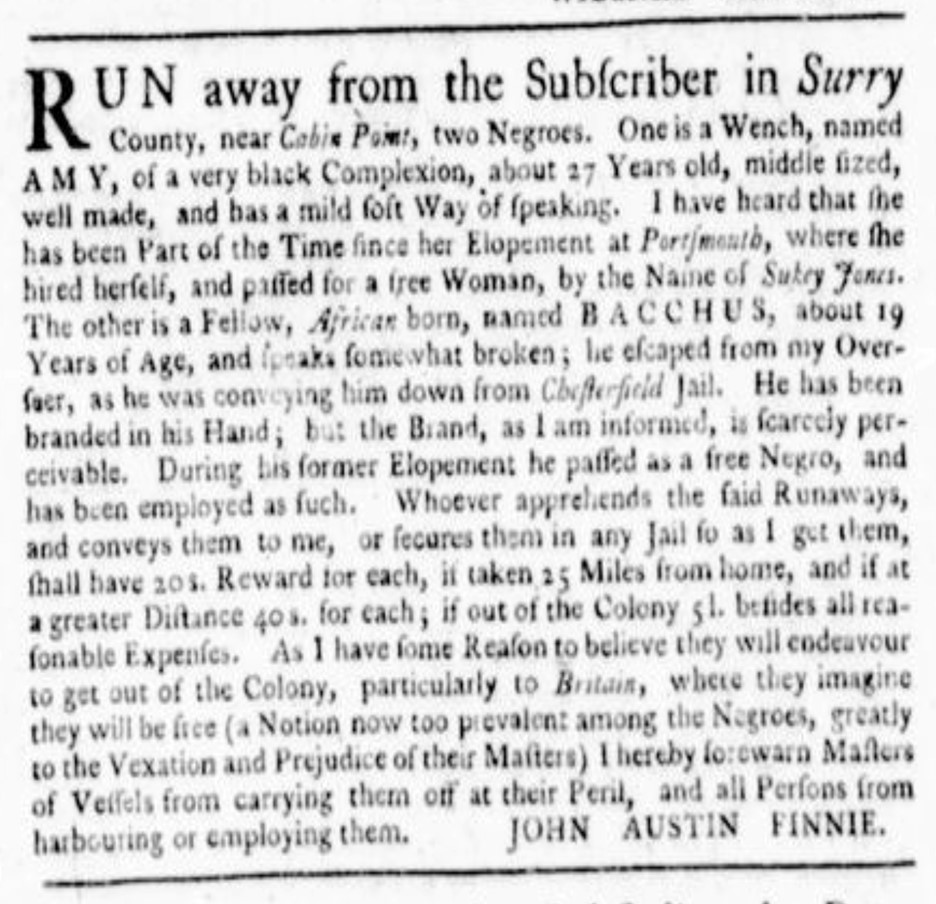
Bacchus and Sukey Jones
How quickly resistance could become revolution. In Boston in the Fall of 1773 popular anger at Parliament’s passage of the Tea Act was building, and in mid-December the arrival of the first tea shipments prompted the Boston Tea Party. When Parliament responded with the Coercive Acts of 1774, delegates from twelve colonies would meet in […]
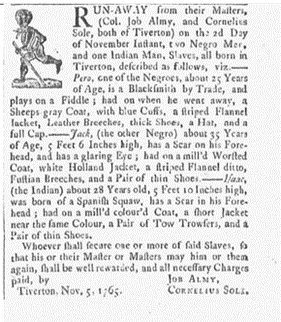
Pero, Jack, & Isaac
What connected people in early America? For some, it was blood ties. This was certainly true of Colonel Job Almy, an enslaver who belonged to one of Rhode Island’s oldest families. Arriving from England in 1630, the Almy family subsequently spread throughout the Narragansett Bay, with its patriarchs establishing themselves as yeomen, merchants, and local […]
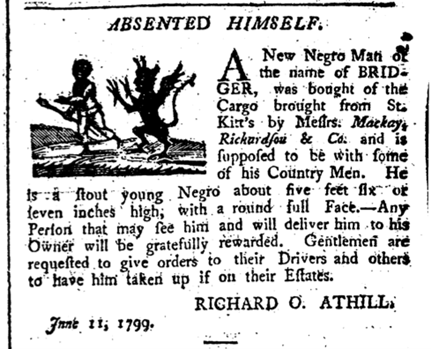
Bridger
Two days after the above advertisement appeared in the Antigua Journal a second appeared in the Antigua Gazette, also published in St. John’s. The text of the two notices is virtually identical but the accompanying woodcut images are strikingly unusual. In each advertisement the crudely fashioned image of a freedom seeker on the run is […]
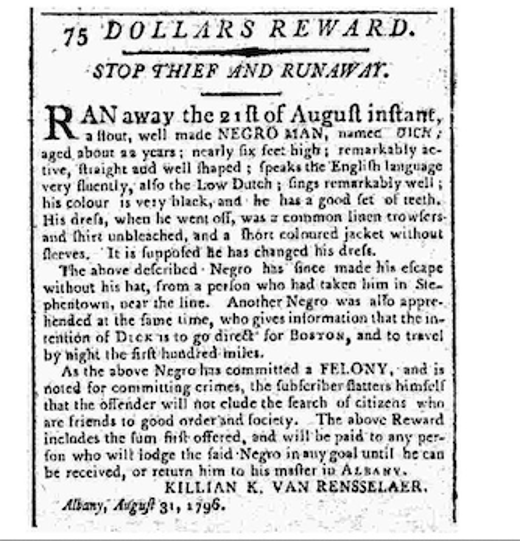
Dick
It was an exceptionally hot summer day when Dick fled Albany, New York, in August of 1796.[1] He was hoping to make it to Boston, the capital of neighboring Massachusetts. His escape appears to have been a planned and perhaps coordinated effort. He fled on a Sunday, when his enslaver Killian K. Van Rensselaer attended […]
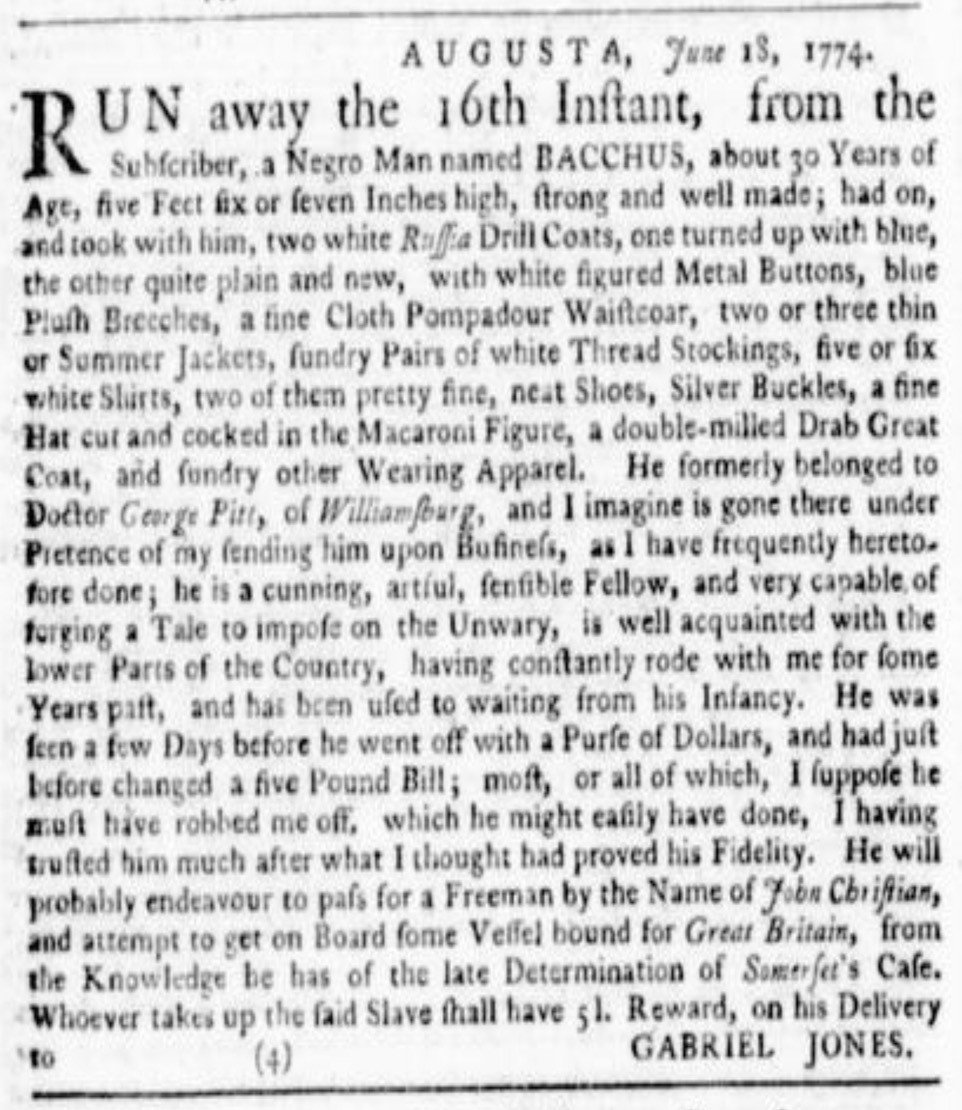
Bacchus
What did the landscape of freedom look like to enslaved people seeking to escape bondage on the eve of the American Revolution? Where in the Atlantic world did runaways think they could find freedom? In the eyes of Bacchus, “a cunning, artful, sensible Fellow” about thirty years old who ran away from his owner in […]
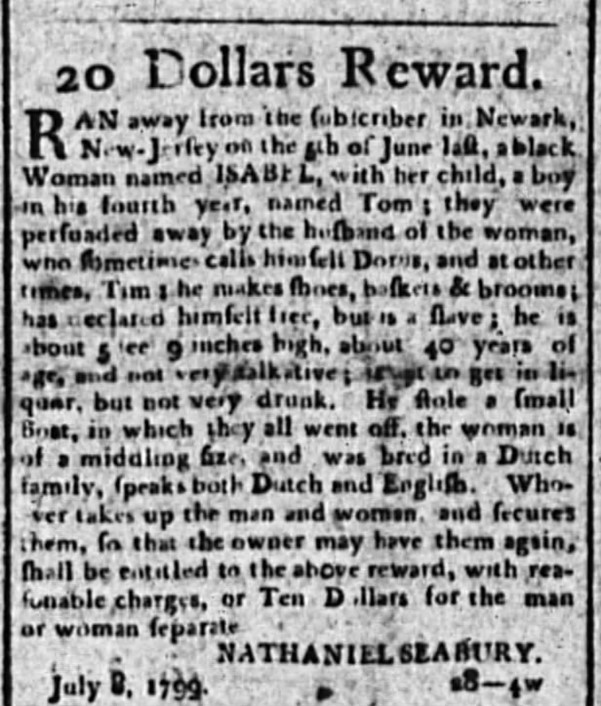
Isabel, Dorus, and Tom
There are tens of thousands of enslaved runaway advertisements in the classified columns of New World newspapers. They are shards, relics from two centuries and more ago. Compressed, factual, and fleeting, these advertisements reveal something of not just enslaved life but perhaps, as was quite possibly the case with Isabel and family, the vital and […]
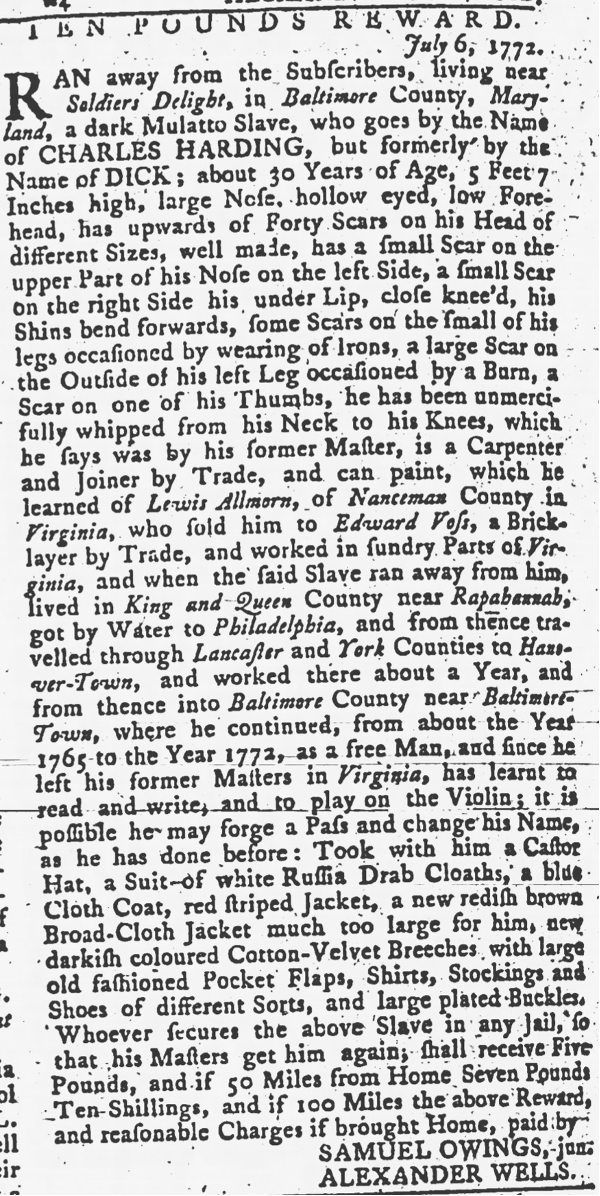
Charles Harding
Who was Charles Harding? What kind of man was he, and what kind of life did he have? There is so much that we shall never know, for although he was the subject of at least two advertisements, each around four hundred words in length, Harding is obscured as much as he is revealed by […]
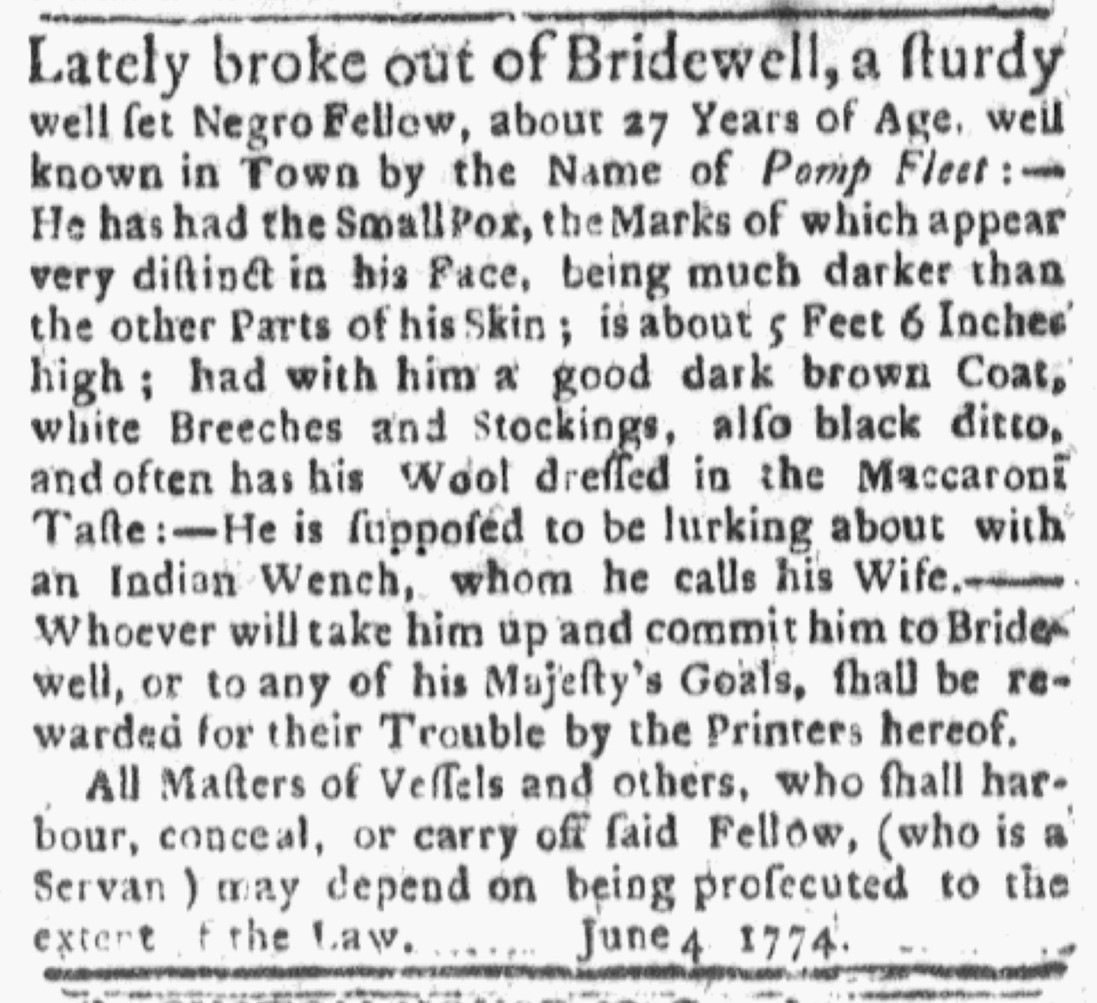
Pompey Fleet
When Pompey Fleet was born in the year 1745, his mother, Venus, could scarcely have imagined the course that her child would chart in life.[1] Pompey would grow up to escape slavery, and then, thanks to his British allegiance in the American Revolution, to escape North America altogether. Ultimately, Pompey would return to the continent […]
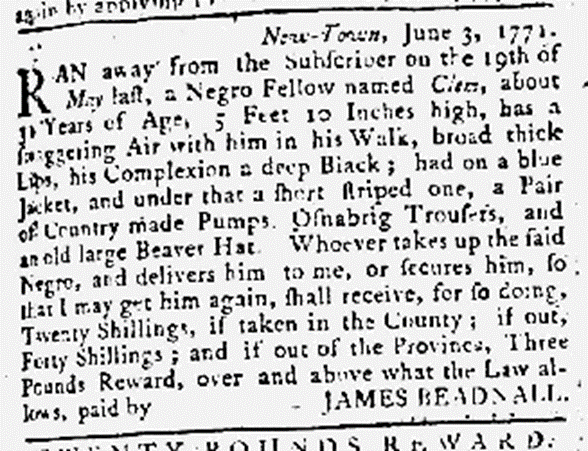
Clem
During the Age of the American Revolution, an enslaved man named Clem left his enslaver, a Catholic priest and a papist patriot, and protested slavery with his feet. Like other bound people in the Chesapeake, he left in the summer, as the weather improved. Determined to own himself, if merely for a brief period of […]
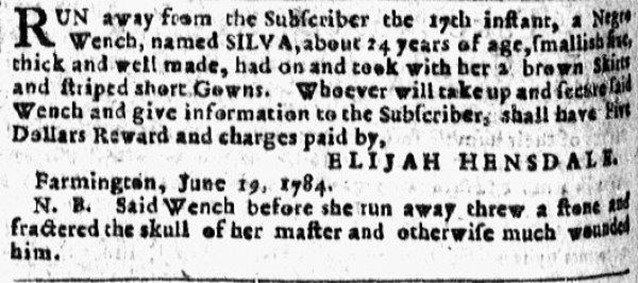
Silva
Silva’s story appeared in the Connecticut Courant on June 22, 1784. The Courant reprinted her story a week later, on the 29th, and once again on July 6th. Her story is one filled with violence, tragedy, and silence. For her story is also an account that reveals in explicit and implicit ways, the unusual complexities […]

Five
Peculiar indeed is the politics of naming. In a time in which men and women owned other men and women as property, as a simple-minded beast of burden, naming signified power. In the minds of those who were subject to its prerogative, naming represented the ultimate expression of a master’s control over his or her […]
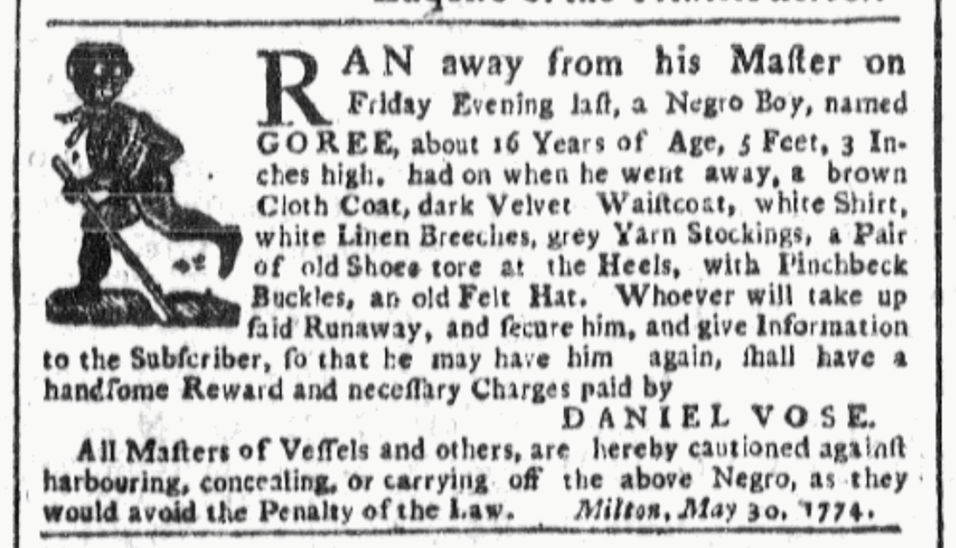
Goree
This advertisement appeared in the Boston Post-Boy. The Boston Evening Post and the Essex Gazette also published a copy of the bulletin.[1] Reflecting perhaps the intensity of the moment, reprints appeared in subsequent editions of both newspapers. The story they reveal is a complex one. Whether in the pages of the Boston Post Boy or […]
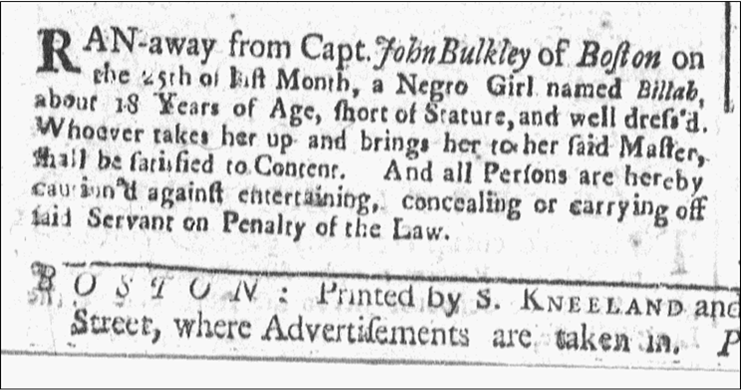
Billah
Billah’s story is one that includes several recurring themes in advertisements for freedom seekers. Concealed between the lines of the bulletin her enslaver had posted for the enslaved woman’s apprehension lies the interlocking subjects of memory, resistance, agency, and cultural resiliency. Like most stories about African Americans before emancipation, Billah’s is not simply a matter […]

Letitia
The days were shortening in 1733, and the chill of winter tightening its grip on Boston, when Letitia found a visitor on the stoop. Letitia at the time might have been seven, the age at which children began to be considered useful in New England, or perhaps she was a bit older—ten or so.[1] A […]
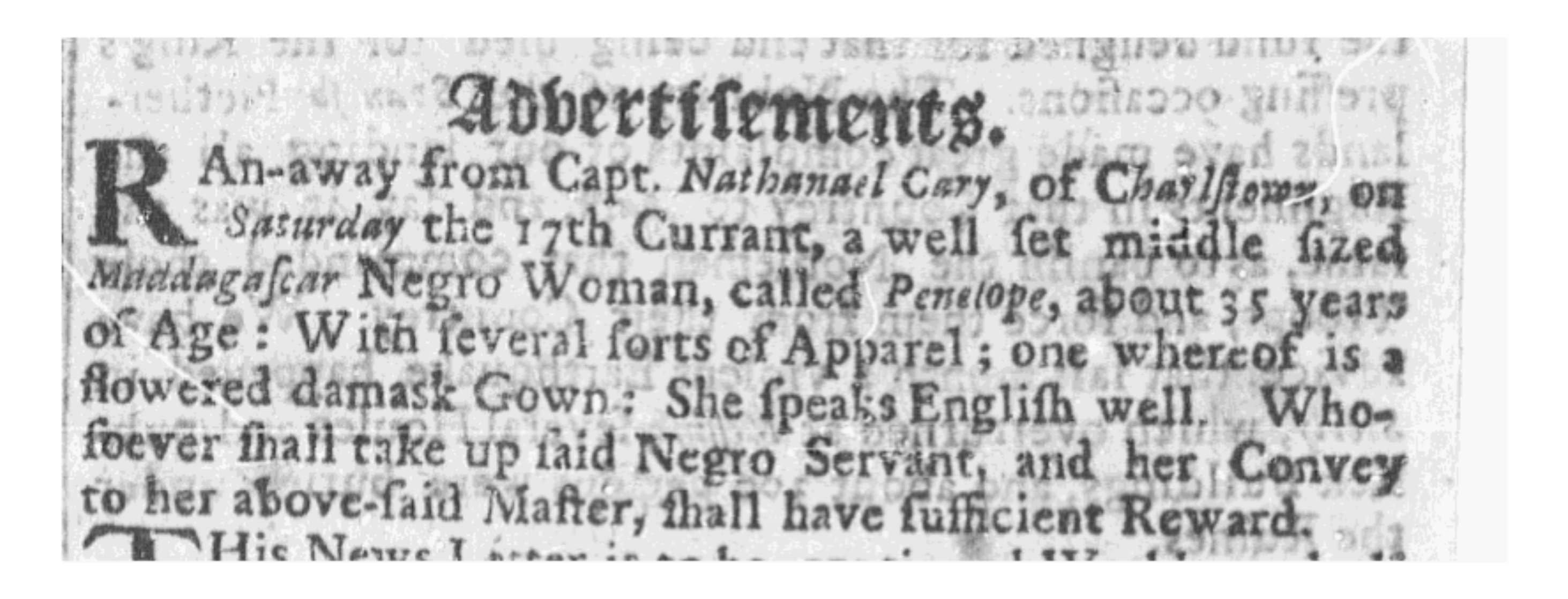
Penelope
Did Penelope’s heart pound as she took shelter in the forest on the outskirts of town? Did she gasp for air as she tore through the nearby farmland? Or did her feet make nary a patter on the town dock as she crept under cover of darkness to a waiting vessel? No one knows how […]
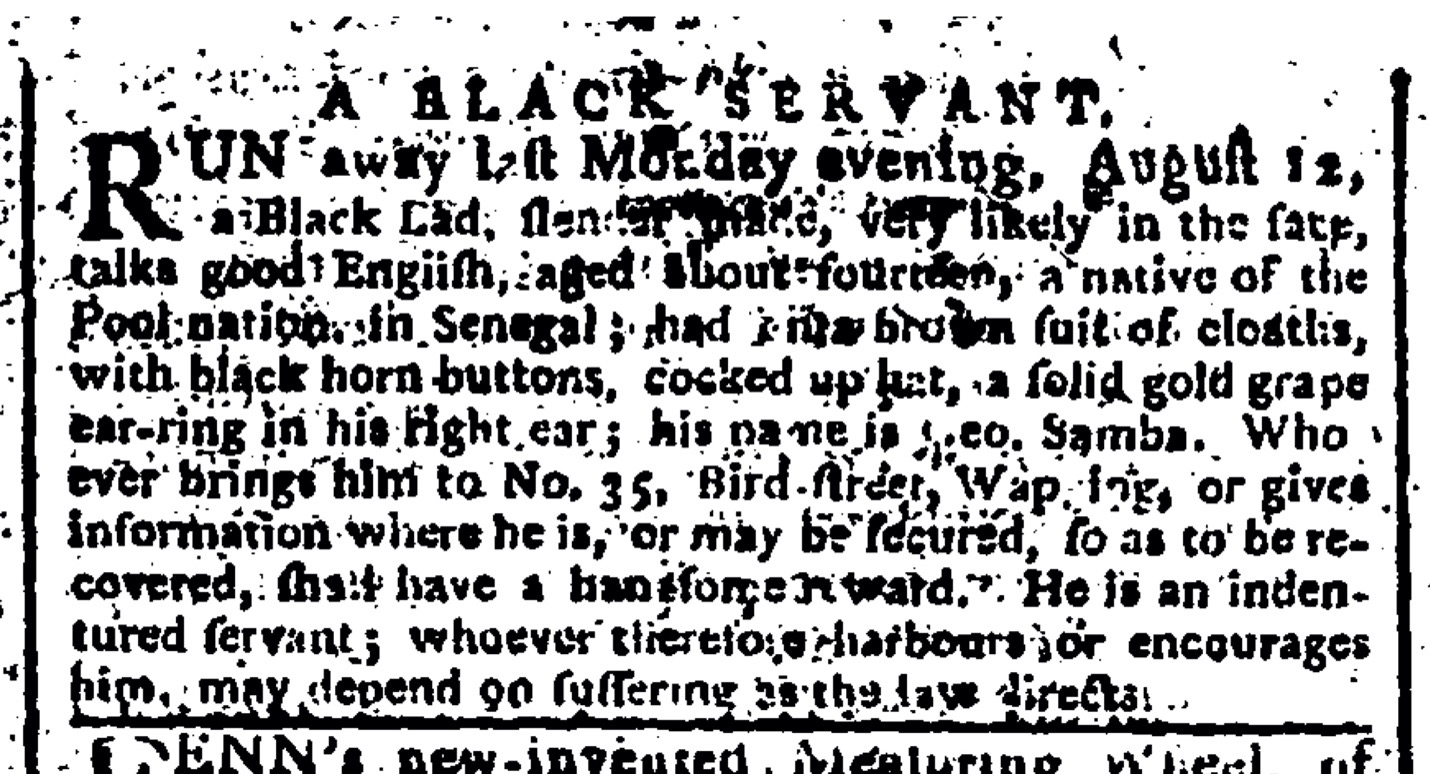
George Samba
Barely a month after crowds outside the Pennsylvania State House cheered the first public reading of the Declaration of Independence “a Black Lad” named George Samba made his own bid for independence. In Wapping, On August 12 this fourteen-year-old African escaped from his master’s home on Bird Street, today known as Tench Street, lying a […]
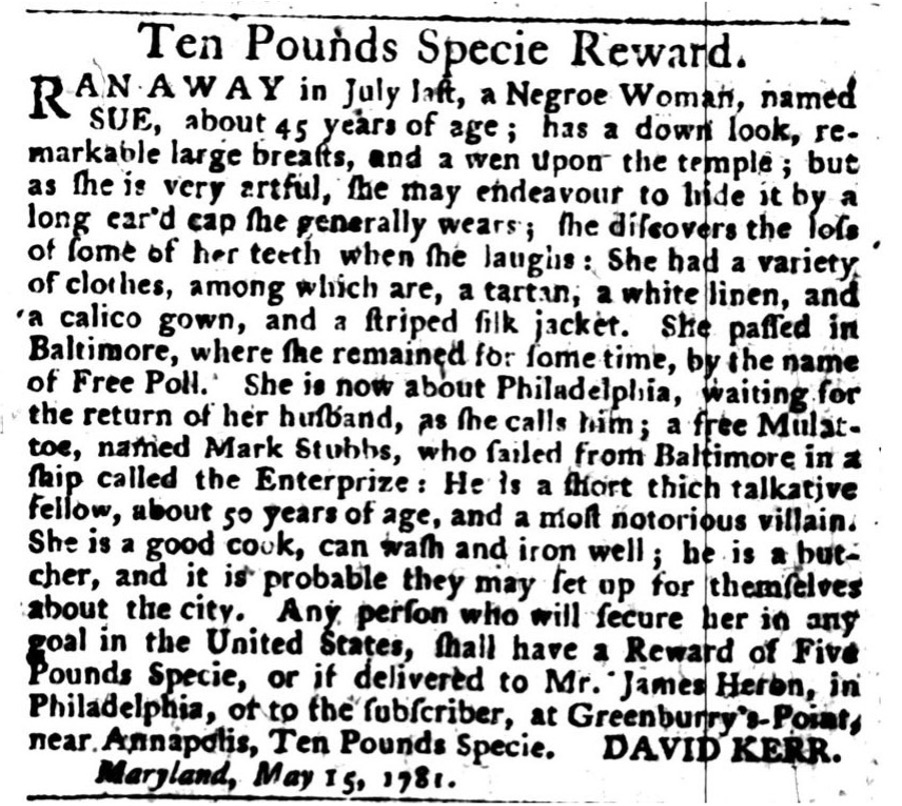
Free Poll
As the name she gave herself after fleeing her enslavers signifies, Free Poll took advantage of the possibilities offered during the American Revolution to declare her own freedom, live with her husband, find paying work, and fashion a life in a growing community of Black Philadelphians, both enslaved and free. Like many freedom-seeking women at […]
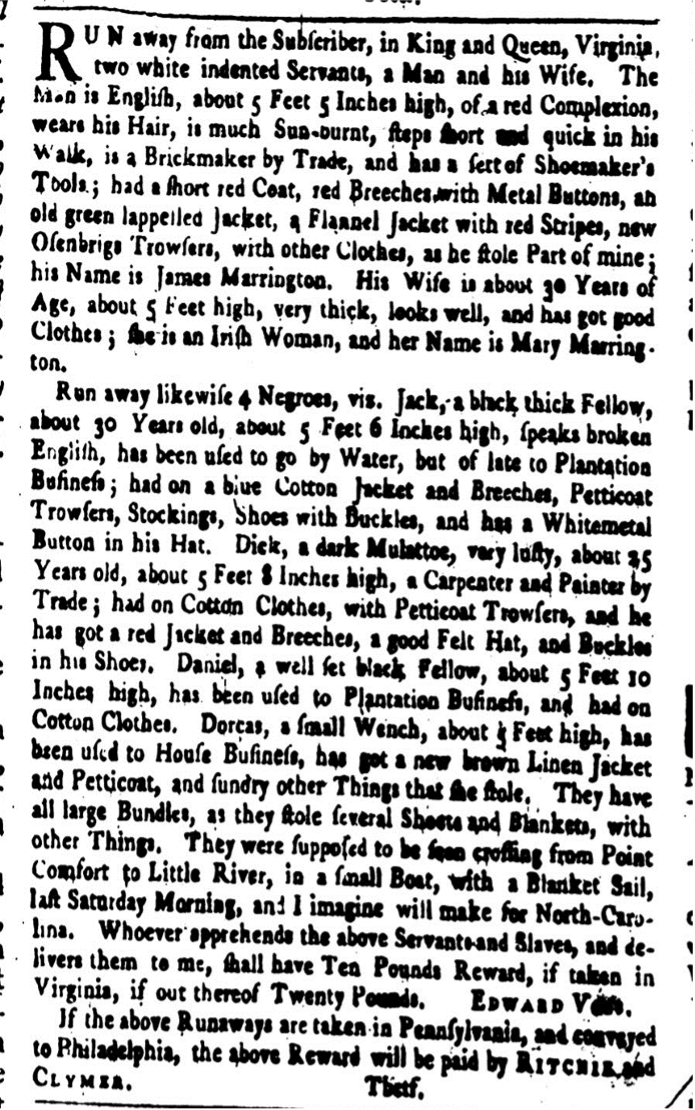
Daniel, Dick, Dorcas, Jack, James, and Mary
Enslaved Black people and White indentured servants sometimes co-operated in efforts to free themselves. In the Fall of 1764, Jack, Dick, Daniel, and Dorcas organized a well-planned escape with two white bound servants, James and his Irish wife Mary. They took a good many items valuable for their escape, including sheets and blankets with which […]
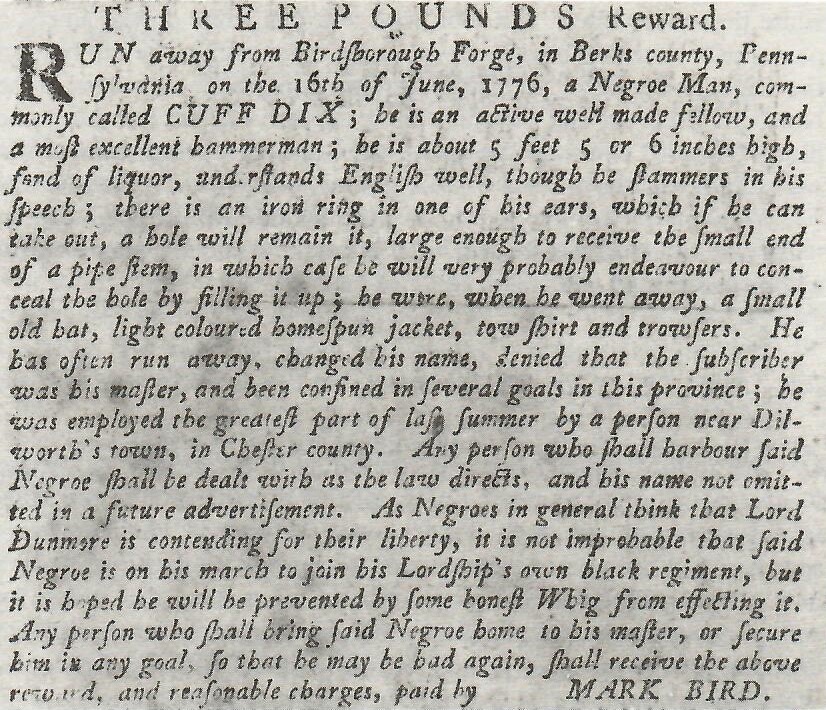
Cuff Dix
Cuff Dix was determined to be free. Again and again he escaped, even when his enslaver restrained him with collars and chains.[1] But his efforts at self-liberation in the spring of 1775 and again in 1776 were different from an earlier attempt in 1774. Mark Bird, the man who enslaved Cuff Dix, was worried that […]
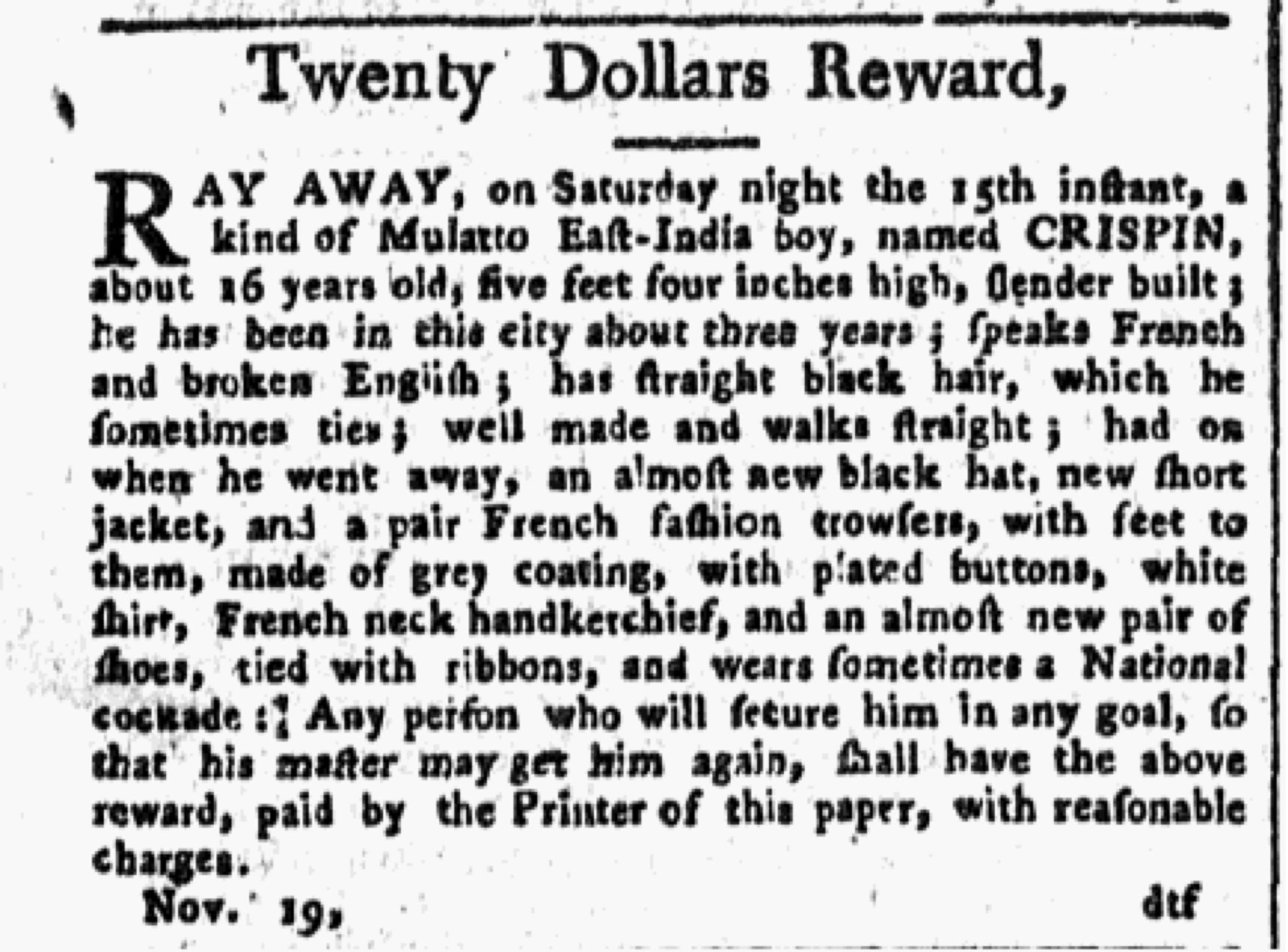
Crispin
Crispin fled enslavement and successfully established his freedom. Moreover, while still enslaved, he boldly indicated his politics by the clothing he wore, clearly sympathizing with the Black revolutionaries on St. Domingue (later Haiti) who fought and died to abolish racial bondage on the island. After making his way from Philadelphia to St. Domingue, Crispin enjoyed […]
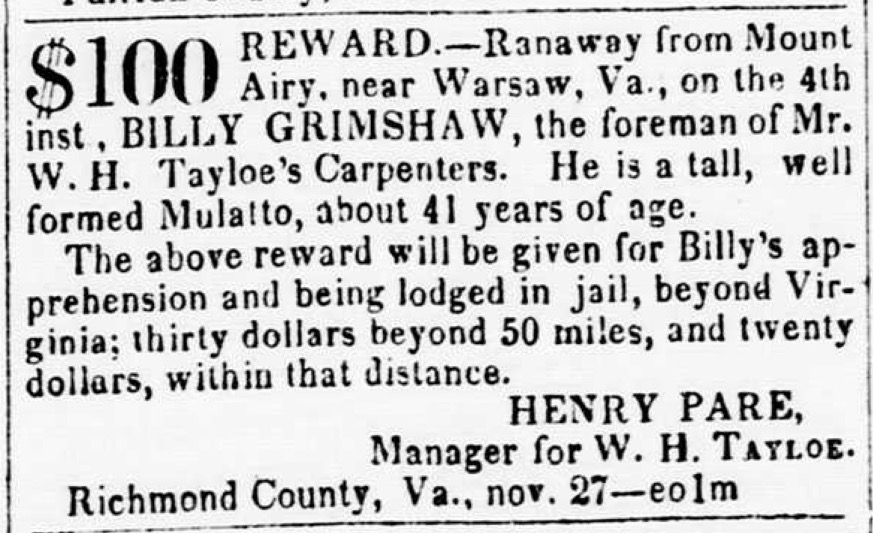
Billy Grimshaw
This simple advertisement reveals only that Bill Grimshaw was a “tall, well-formed Mulatto, about 41 years of age.”[1] Grimshaw had been born during Thomas Jefferson’s first term as president, perhaps to Letty and James who were enslaved workers of John Tayloe III at his Neabsco ironworks in Prince William County. In 1820 Tayloe transferred eighteen-year-old […]
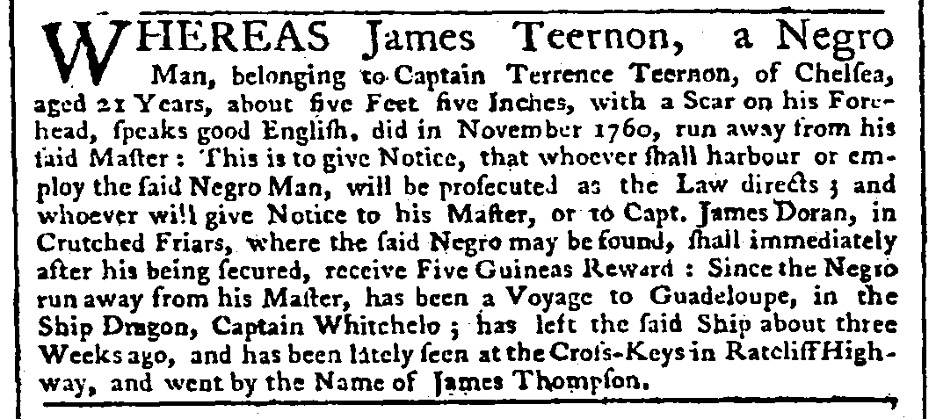
James Teernon
It is quite possible that James Teernon had been born in Africa. The scar on his forehead might have been a ‘country mark’, the ritual scarification practiced by some West African peoples. Furthermore, he was described by Captain Terrence Teernon as a man who “speaks good English,” a form of phrasing commonly used for those […]
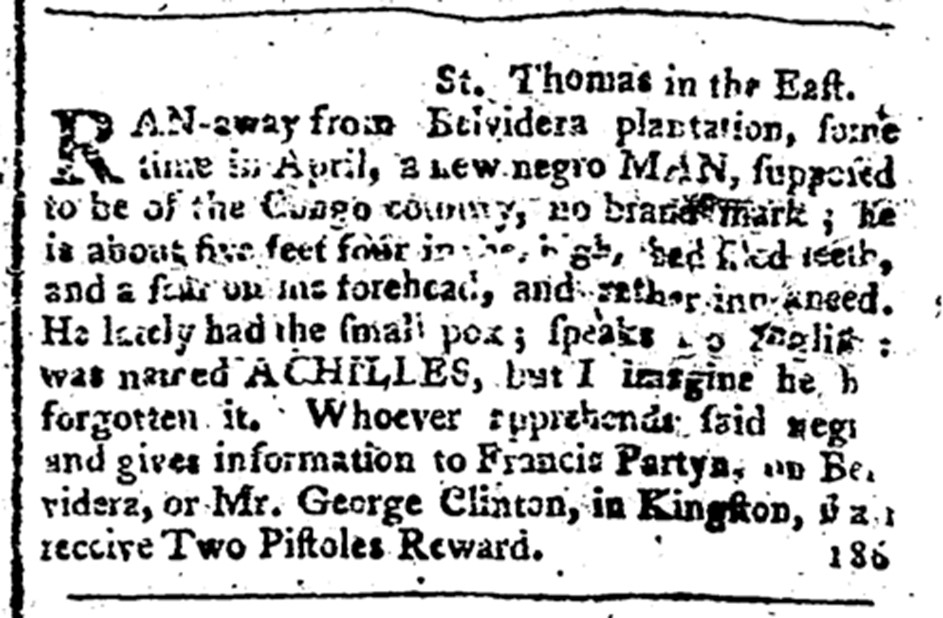
Achilles
By July 4th 1776 Achilles had already freed himself. He had eloped in April, not long after arriving in Jamaica from West Africa. Francis Partyn, presumably the man running the Belvidere Plantation, believed that the freedom-seeker has come from “the Congo country,” the West Central African point of departure for just under half of all […]
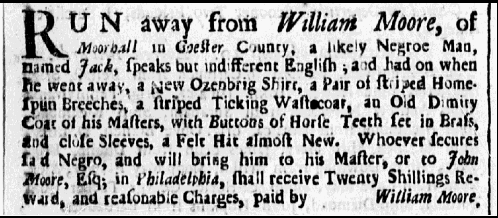
Jack
How might we today visualize the appearance of people who fled enslavement? How can we give faces to the supposedly faceless in history? The 18th-century clothing described in this advertisement can be reconstructed with some accuracy, as will be discussed below. It is more difficult to imagine their bodies, including their physical features, posture, hair […]